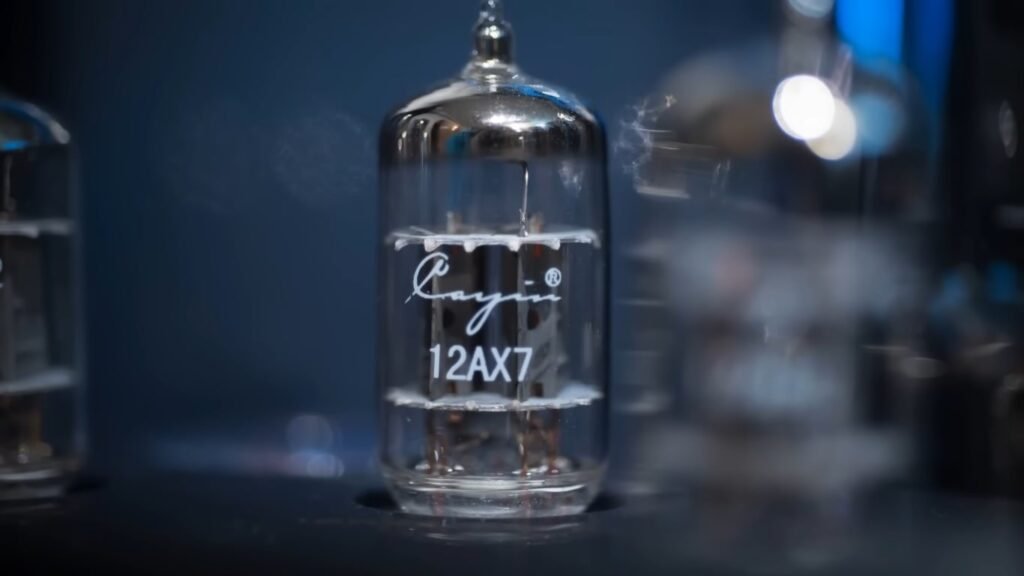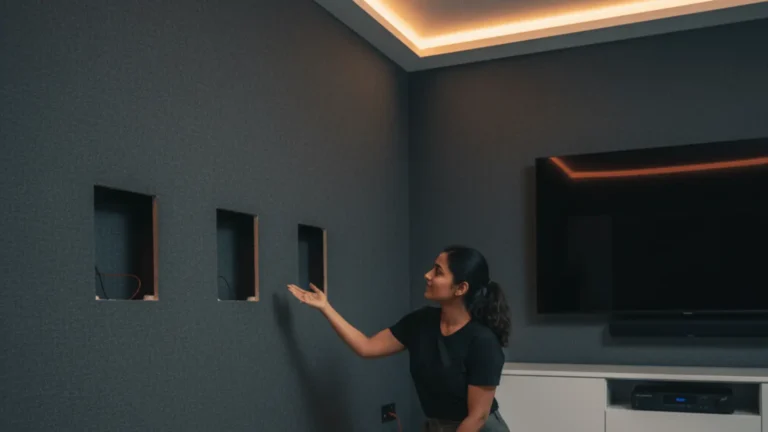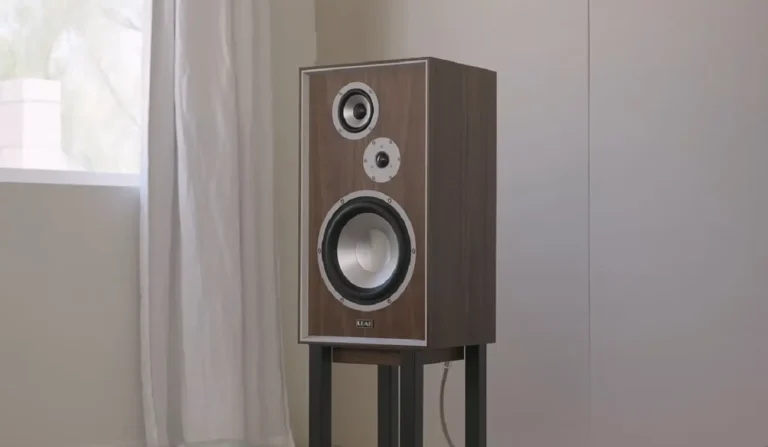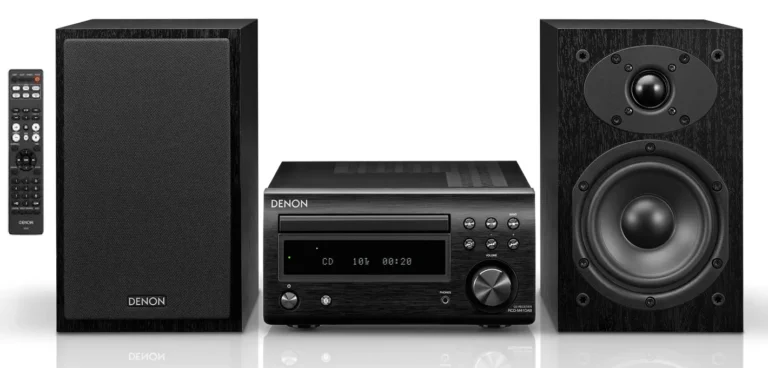Cayin CS-55A Integrated Amplifier Review
Cayin CS-55A: Audiophile gear is known for being pretty traditional. It’s like the world of making sharp swords – both are slow to change. So it’s surprising how quickly and confidently Chinese brands have made their mark here. But let’s not talk about business strategies from Asia; let’s focus on one interesting result of their work.
Cayin CS-55A For Music Lovers
Cayin is a brand well-known to our music lovers. But not everyone knows it’s owned by Zhuhai Spark Electronics Equipment, a pretty big company with government backing. So, it’s not just a small workshop with basic tools trying to copy Western models. Today, Cayin has a modern, high-tech production setup.
But just having fancy equipment doesn’t automatically mean they make great sound equipment, especially when it comes to delicate stuff like tube technology. Especially because there are so many cheap boxes out there with subpar sound, which has hurt the reputation of Chinese audiophile gear.
Regardless of discussions about national hi-fi characteristics, nothing beats listening to a specific device. That’s exactly what we’ll do.

Vintage
Cayin’s approach to lamp technology is pretty impressive. They offer a wide range of products, including ten integrated circuits, three preamplifiers, a power amplifier, and a CD player. Their portable line is especially diverse. They use lamps and switching schemes in various ways, but all their devices share a recognizable style.
While many European and American audiophile startups lean towards a hipster aesthetic, Cayin takes a different route. They don’t focus on flashy finishes or trying to look like a fancy garage project. Instead, they blend the aesthetics of 1950s equipment with modern hi-fi and interior design trends. Picture this: classic layout, flat chassis, a bunch of lamps on the surface, and transformer casings in the background. It’s vintage without being over the top.
The metal surfaces subtly shine with a “gray graphite” hue that rivals the quality of automotive coatings. Golden inscriptions adorn the chassis, yet their thin and compact font maintains a harmonious balance without appearing flashy.
While the glossy main body, toggle switches, and labeled parts evoke a retro vibe, the thick front panel crafted from roughly brushed aluminum presents a more modern aesthetic. Silver with black inscriptions gives it a contemporary feel, while the dark anodized facade exudes a sense of complete and unwavering vintage charm, appealing to different tastes.
Four Benefits in One
Measuring just 36 cm in width (8 cm narrower than the classic high-fi component), the top panel hosts eight radio tubes: four sizeable output KT88 tubes and a pair of smaller 12AX7 / 12AU7 tubes. Adjacent to them are slotted bias current regulators and a stylish pointer indicator for adjustment purposes.
Interestingly, you can completely change the set of tubes if you wish. Instead of the KT88 beam tetrodes, you can use EL34 pentodes, and instead of the 12AX7 / 12AU7 pairs, you can use ECC83 / ECC82. Adjusting the circuitry for this is as simple as flipping a single selector on the rear panel.

The Cayin CS-55A can operate in two fundamentally different modes: triode and ultralinear. Switching between them is also simple, requiring just a button press—not even on the amplifier itself, but on the remote control.
Also Read: Cayin CS-805A Tube Amplifier Review
Speaking of the remote control, it’s quite impressive too. It’s a compact metal bar that feels just right in your hand. It lets you adjust volume, switch inputs, and the biggest button is for selecting the gain mode. And there’s a reason for that—it’s a crucial feature!
Looking ahead a bit, it’s worth mentioning that depending on the music you’re listening to, your preferences might change. And there’s nothing more exciting than being able to change the sound with a simple press of a button, all without leaving your chair.
Now, let’s talk about what’s under the hood of the Cayin CS-55A. It’s a mix of nostalgia, solidity, and a touch of eclecticism. It’s nostalgic because much of the setup is old-school hinged installation. It’s solid because the soldering is top-notch, the wiring is kept short, and the components are high-quality (think ceramic lamp panels, graphite-coated resistors, Nichicon capacitors, and an Alps motorized potentiometer).
The power transformer is toroidal, and the output transformers are wound on an E-shaped iron with taps on both primary and secondary windings. The primary taps are for implementing the ultra-linear mode, while the secondary taps are for optimal performance with speakers of different impedances (8 and 4 ohms).
It’s important to note that ultra-linear amplifiers are highly sensitive to the quality of transformer manufacturing, and not every company can maintain the necessary level of production. However, with its deep roots in the electronics industry, Cayin confidently tackles even such challenges.
Regarding the mentioned eclecticism, alongside components directly soldered onto lamp and transformer blocks, there are also printed circuit boards with a high level of integration. This is understandable, as units like the remote controller and the DAC cannot be assembled without them. Speaking of the built-in DAC, it accepts PCM streams up to 32-bit/384 kHz, although details about its chipset and circuitry are not officially disclosed.
As for the origin of the tubes, it’s a bit of a mystery. What we do know is that Cayin selects them in sets and marks them with their brand. On the KT88 tubes, you’ll find the slogan “Never be the Same Again,” which seems a bit out of place for serious electronics.
What’s meant by “Never be the Same Again” probably isn’t about the technical characteristics of the KT88 tube itself. It seems to be more of a call to expand your aesthetic horizons, inspired by diverse music experiences.
Let’s talk about the speakers used in the testing. The Cayin CS-55A was paired with ELAC Carina FS247.4 speakers. These relatively compact 2.5-way towers feature a pair of 5.25-inch mid/bass drivers with two-layer aluminum-cellulose cones and a proprietary ribbon tweeter that operates on the principle of an acoustic transformer.
For comparison, we also listened to the modern version of the KLH Model Five speakers, which were hugely popular in the 70s and are designed with an acoustic suspension. Our sources included the Technics SL-G700 network and SACD player, along with a MacBook Pro running Audirvana, connected with Analysis-Plus Solo Crystal Oval 8 speaker wires. And if you’re into vinyl, you can connect your turntable directly, as there’s a built-in MM phono stage.
Check Out: Cayin CS-150A Stereo Amplifier Reviewed
In terms of tube concepts, the power of our test subject commands respect. In triode mode, it delivers 22W, while in ultra-linear mode, it boasts 40W (RMS, at THD 1%, regardless of load impedance).
When it comes to sound, the differences between triode and ultra-linear modes were expected. What was even more surprising and delightful was the inability to decisively prefer one over the other, even when listening to a particular speaker.
Moreover, swapping bass-reflex towers with ribbon tweeters for closed boxes with aluminum dome drivers on rubber suspensions created such a diverse range of sounds that it was simply breathtaking.
To sum up my impressions, I found that the sensitivity and impedance of both the Carina FS247.4 and Model Five speakers were nearly identical, making the comparison straightforward.
In triode mode, I was impressed not only by the richness of timbres in the vocal range but also by the articulate bass, which is often a rarity in such systems. Despite a fairly balanced tone overall, it was the distinctly tube-like midrange that caught my attention.
Listening to the album “Quiet Letters” by Bliss, I was captivated by its textured yet unpretentious melodic lyrics. Alexandra Hamnid’s voice, sometimes layered in multiple tracks, exuded an angelic charm that I found difficult to dissect into technical elements like sibilants and overtones. The bass and cymbals, mixed generously, confidently, guided the rhythmic lines without overpowering the rest of the music.
Switching to ultra-linear mode and changing from the Carina to the Model Five speakers aimed for a more club-like sound. While the bass didn’t necessarily get deeper, it did gain in resolution and slightly in control.
Expecting sharper highs in ultra-linear mode, the transition from ribbon tweeter to dome didn’t bring as much quantitative change as it did a stylistic one.
Staying true to the classic essence of the KLH Model Five, the sound remained balanced and not overly aggressive. However, now the mood was set more by the bass support and sharpness rather than the refined treble.
Returning to the ELAC Carina speakers, I found that Vaya Con Dios worked exceptionally well in ultra-linear mode. Not just the well-known “Nah Neh Nah,” but deeper and more intriguing tracks from the penultimate album “The Promise.” Whether you like it or not, an additional 18 watts for speakers with a sensitivity of 87 dB, like the Carina, didn’t hurt.
Quiet Different
It’s not just about power; it’s about the overall sound character. Dynamic genres with bright guitar parts and deep, but agile basslines suit the style of ultra-linear mode more than triode.
On the flip side, the “triode” mode proved optimal not only for chamber jazz. Even tracks that weren’t inherently tube-like, such as the John Wick soundtrack or Bach’s sonatas, gained an intriguing interpretation in it. The cohesive, solid sound with sparkling highs and well-defined bass structure didn’t overwhelm with details but instead helped immerse oneself in the musical storytelling.
There’s no need to pit such an amplifier against transistor amplification. It simply invites you to include it in your system and experiment, for a long time and with discerning taste.
Conclusion:
The Cayin CS-55A is more than just another tube amplifier—it’s a bridge between vintage charm and modern versatility. Whether you’re a tube purist drawn to the natural warmth of triode mode or a hi-fi explorer craving the dynamic punch of ultralinear operation, this amp delivers both with finesse.
Its build quality is top-notch, its aesthetic pleasingly retro yet contemporary, and its sonic character flexible enough to suit everything from ethereal vocals to energetic electronic beats. Swappable tubes, dual operating modes, a built-in DAC, MM phono stage, and a thoughtful remote control—Cayin has crammed this amplifier with serious value.
Price and Availability
- Price:
- U.S. Retail Price: Around USD 2,499
- European Retail: ~€2,200–2,400 depending on VAT and dealer markup
- Asia (e.g., China Mainland): Approx. CNY 13,800
- Availability:
- Widely available through authorized dealers like:
- MusicTeck
- HiFiGo
- Amazon (selected regions)
- eBay for new/used units
- Often in stock, but color variants (black vs silver) may vary depending on the region.
- Widely available through authorized dealers like:
- Pro Tip: Some online vendors include upgraded tubes or discounted cables in bundles—worth checking during promotional seasons.
Specifications Cayin CS-55A Integrated Amplifier:
Frequency response: 5 Hz – 44 kHz (-3 dB)
Ex. Power (RMS): 2 x 40W (ultra-linear), 2 x 22W (triode)
Harmonic distortion: 1% (1 kHz)
S/N: 92 dB, 68 dB (phono stage)
In. Sensitivity: 270 mV (line), 3 mV (phono stage)
In impedance: 100 kΩ, 47 kΩ (phono stage)
RIAA Curve Accuracy: ±0.25dB
MM Phono Gain: 40 dB
Load impedance: 4 – 8 ohms
Cons. power: 270 W
Dimensions (WxDxH, mm): 360 x 334 x 180
Weight: 17 kg
Pros And Cons Cayin CS-55A Integrated Amplifier:
Pros
- Outstanding finish quality
- Rare functionality for a tube-integrated circuit
- high-quality sound
- plenty of opportunities to find your sound.
Cons
- Lamp cost.
- DSD Not supported







